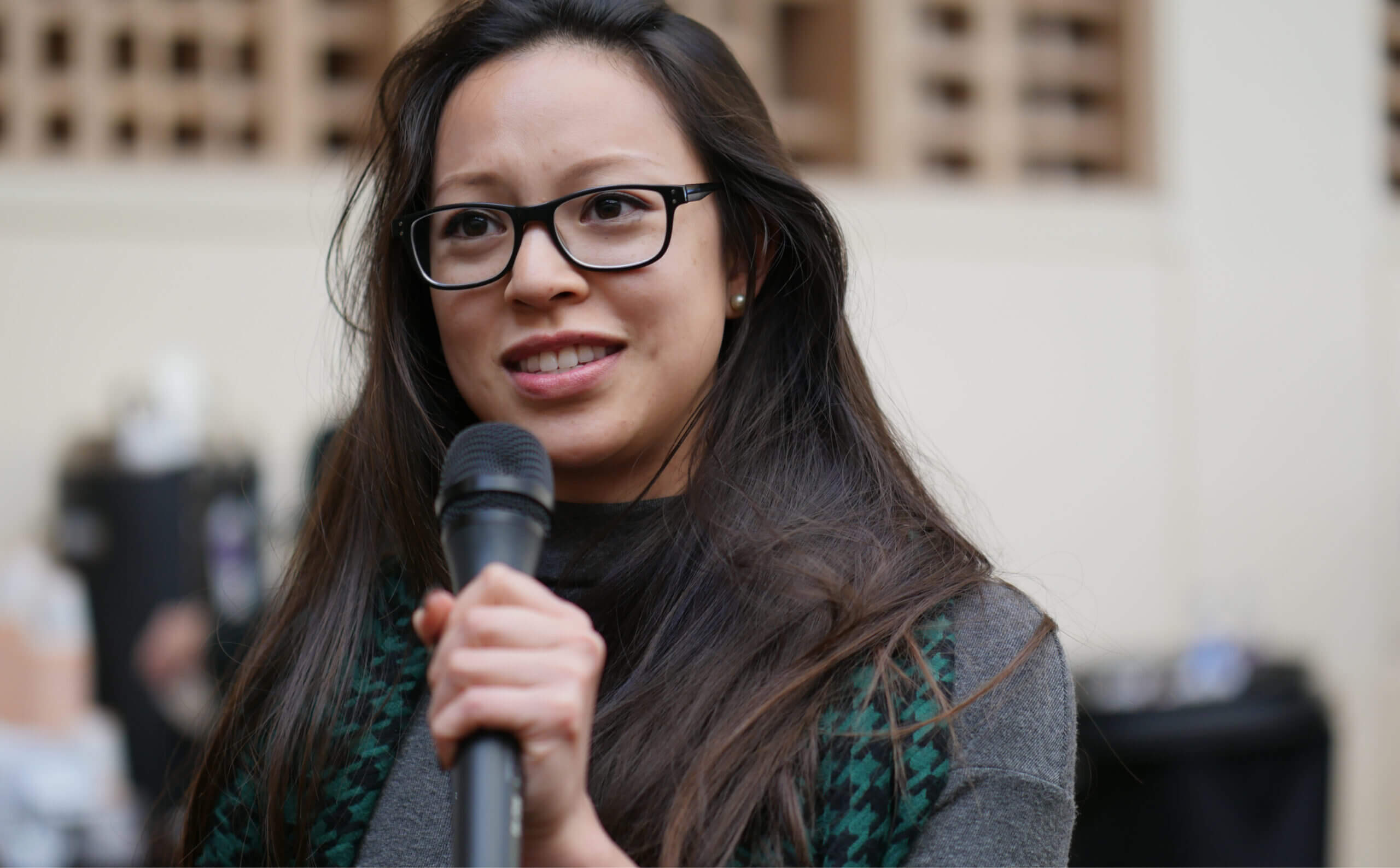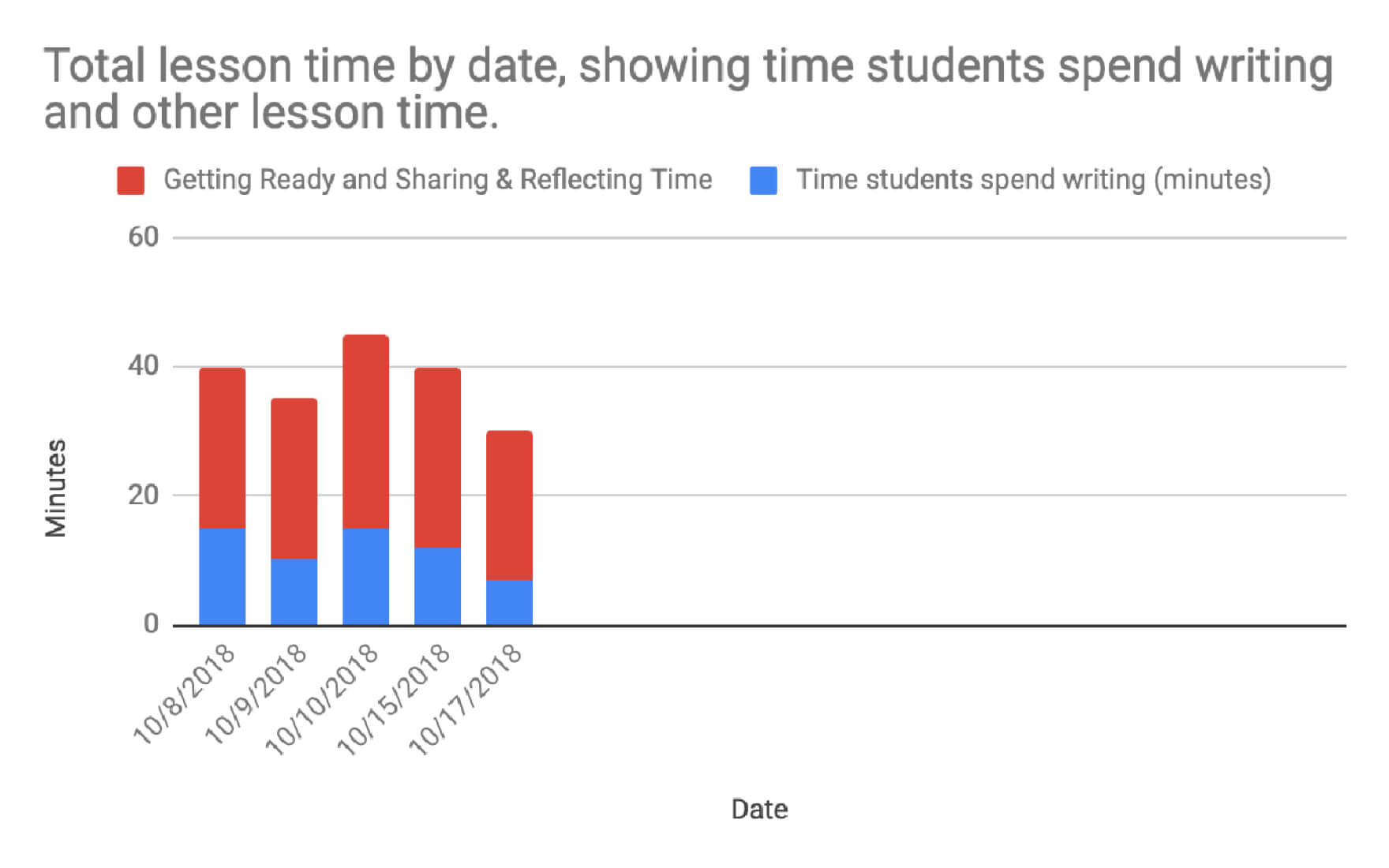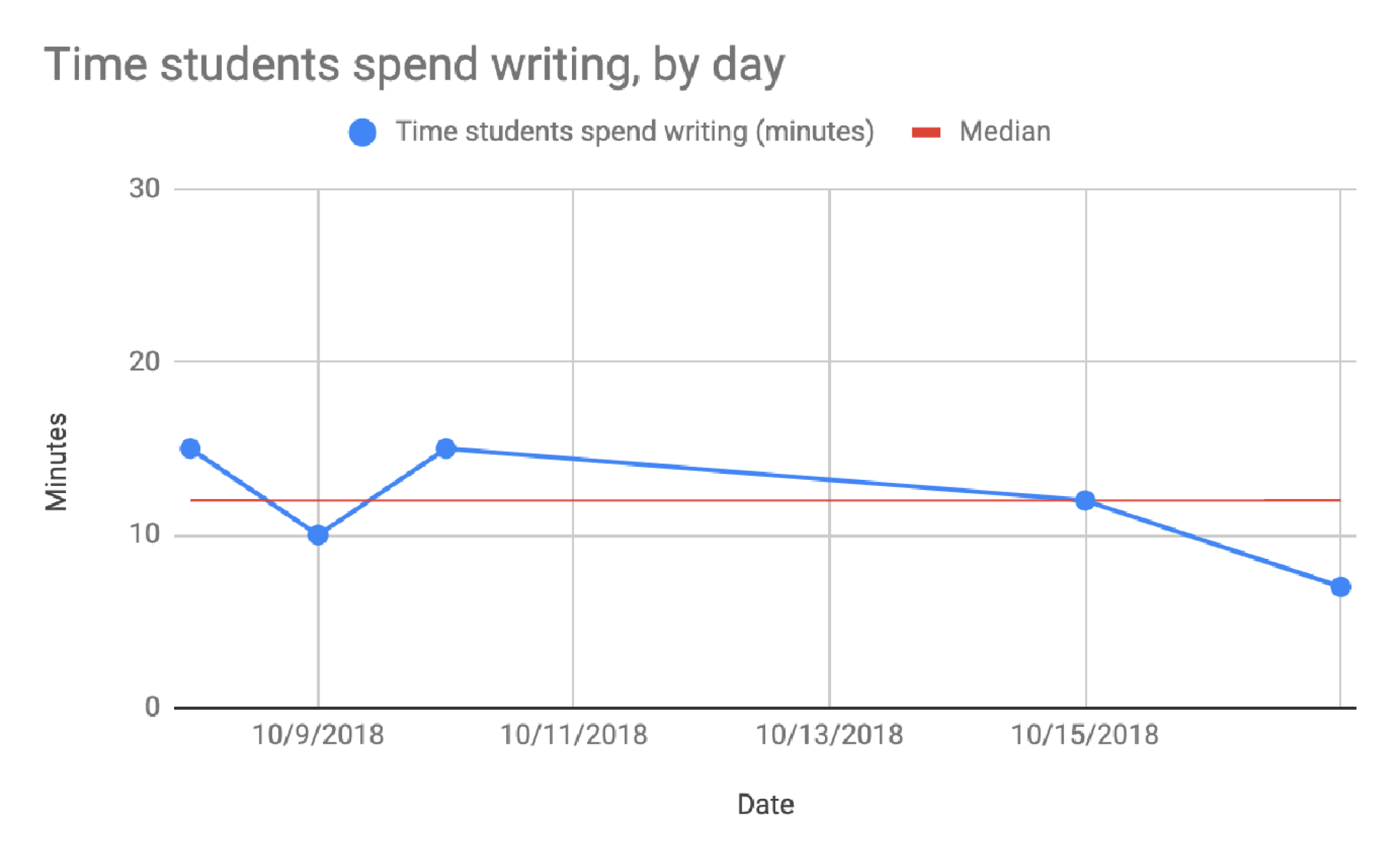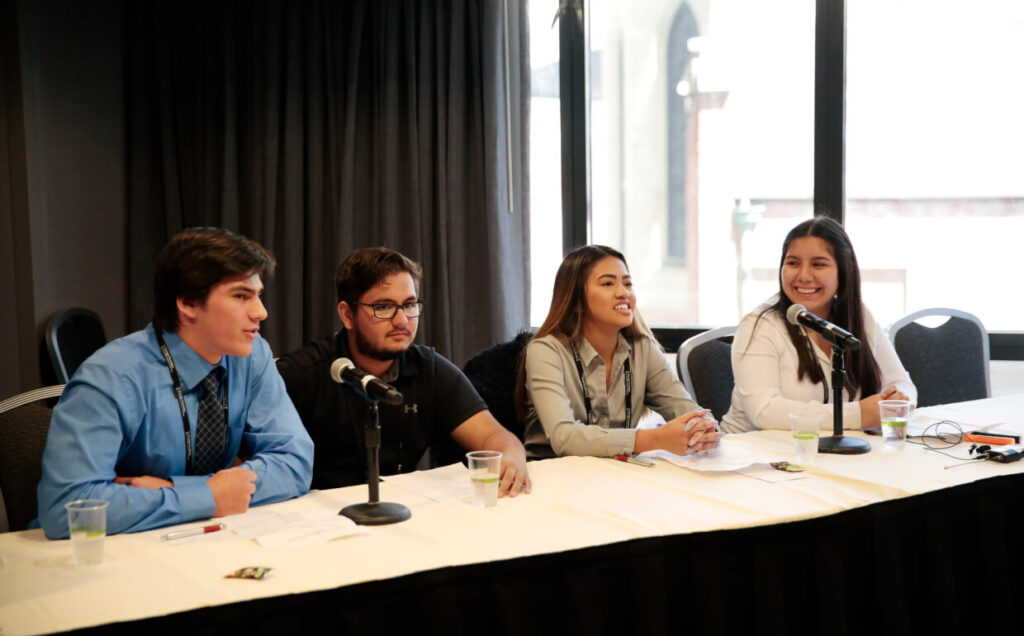Student Independent Writing Time Blog
Student Independent Writing Time Blog
“Just by virtue of tracking this information, teachers were pressed to attend to an important aspect of their instruction that they may not have been thinking about.”
— Sola Takahashi, Senior Research Associate, Improvement Science, WestEd

Introduction
The Student Independent Writing Time measure is relatively simple and straightforward. It does what the name suggests — tracks the number of minutes students spend in independent writing. However, the power of this measure comes not just from the data collected but how it is used. It provides a strong example of how the social processes built around a measure can encourage users to attend to new information, challenge assumptions, and work collaboratively toward instructional improvement.
The Need for Measurement
The Regional Education Lab West (REL West) at WestEd worked with two schools in Reno, Nevada, as part of the K-6 Literacy Improvement Project to increase student achievement in writing. As they developed their theory of improvement, they identified four student learning experiences to support this aim: (1) engagement in writing, (2) collaboration with peers, (3) independent writing time (20-30 minutes daily), and (4) opportunities to reflect on and improve writing. Although students’ independent writing time is a critical classroom practice that paves the way for improvement in writing, the hub leadership team found that it was not consistently implemented at the two schools and identified it as an important measure to track.
The Measure: Student independent Writing Time
The team prepared a Google spreadsheet template that teachers could use to record the number of minutes students spend in independent writing time as well as the total number of minutes for the writing lesson.
As times are added to the spreadsheet, two charts are populated automatically, showing the total lesson time compared to the amount of time spent in independent writing and the time students spend writing each day (see Figures 1 and 2).
Figure 1. Total lesson time compared to independent writing time

Note. “Getting Ready” is the short form of “Getting Ready to Write,” and in this case can be understood as whole group instruction.
Figure 2. Time spent writing per day

Measures for improvement are intended to support learning within a system. The Google spreadsheet templates provide a simple way for teachers to record their data regarding student independent writing time each day. The charts generated in the spreadsheets also make it possible for teachers to analyze the data quickly, identify and implement changes in instruction, and determine whether the changes led to the improvement they were hoping to see. Additionally, because this measure is tied to one of the key levers in the theory of improvement, it can be used to refine and test the theory while allowing teachers to track improvement. The student independent writing time measure was part of a larger system of measures that evolved over time and helped the team learn about their theory of improvement.
Insights from Using the Measure: Social processes that support using data for improvement
In order to spur instructional improvements based on this data, the partnership team needed to build effective data analysis routines among teachers. Taking advantage of a professional learning structure that already existed in the school sites, the team regularly met with teachers during their grade-level professional learning community (PLC) meetings. Every grade-level team also had a “team lead” who received additional coaching about team facilitation and the inquiry process and met with other leads to share change ideas across grade-level teams.
To kick off the improvement project with grade-level teams, the research team focused on building trust with and among teachers. They utilized a discussion protocol in grade-level team meetings that prompted teachers to share their observations about what was happening in their teaching of writing. Teachers reflected on the successes and challenges they were currently experiencing and unpacked common challenges together.
After a few weeks of establishing these learning routines, the partnership team then introduced the idea of collecting independent writing time data, and teachers began recording their data on the provided template. It’s important to note that initially the data was not shared with other teachers in the group. This encouraged teachers to honestly report on their classroom practices, and many were surprised to discover that they actually gave students less time to write than they intended.
After trust was established within the group, teachers began sharing their data with one another. In grade-level meetings, the team utilized a “Learning Huddle Protocol” to reflect on their recent teaching experiences, examine the data, discuss challenges, and determine next steps. These huddles were not only critical for moving the improvement project forward but also encouraged a shift in mindsets in many teachers as they became more comfortable inquiring about their practice. Teachers started having open conversations about their writing instruction and many teachers left the meetings with change ideas to try.
By centering the conversations around the Student Independent Writing Time measure, one member of the partnership team shared that it helped teachers “get away from just their gut feeling about how things were going — pushing them to attend to certain features of the classroom that they might not have been attending to otherwise.” Partnership lead Kim Austin explains, “This process of collecting practice data not only made instruction visible, it made instructional practice visible over time. Seeing the graphics and visual displays of how long the lessons were taking — and how much writing time students were getting, or in many cases, not getting — raised the teachers’ awareness of the instructional decisions they were making every day and how these decisions were impacting their students’ learning opportunities.”
Impact of Measurement for Improvement
The Student Independent Writing Time measure enabled teachers to really take note of their instructional practices around writing. However, this recognition alone might not yield instructional improvement. The social processes and collaborative inquiry routines embedded within the grade-level team meetings built trust and promoted honest reflection as teachers made sense of the data together. These conversations led to collaborative problem solving and equipped teachers with ideas and strategies to improve writing instruction in their classrooms. While testing new ideas, teachers captured data along the way and had time to step back to observe their own practice. In addition to the overall improvement in student writing, perhaps most importantly, these collaborative inquiry routines, utilized alongside the measure, supported a more intentional and disciplined implementation of the curriculum and shifts in teachers’ mindsets around how to improve their practice.








